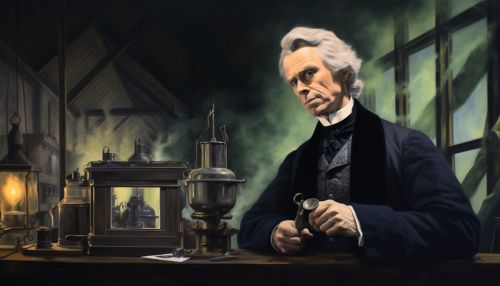Electromagnetic induction
Introduction
Electromagnetic induction is a fundamental principle in physics that describes how a magnetic field can generate an electric current. It is a phenomenon that was first discovered by scientist Michael Faraday in 1831, and it has since been used to develop many technologies that we use today, such as electric generators and transformers.
Historical Background


The principle of electromagnetic induction was first discovered by Michael Faraday in 1831. Faraday's experiments involved wrapping two coils of wire around an iron ring. He found that when he passed a current through one coil, a momentary current was induced in the other coil. This current was only present when the first coil was being switched on or off, indicating that a changing magnetic field was necessary to induce the current.
Faraday's discovery of electromagnetic induction was a significant milestone in the history of physics, as it demonstrated the relationship between electricity and magnetism. This paved the way for the development of many electrical technologies that we use today.
Faraday's Law of Electromagnetic Induction
Faraday's law of electromagnetic induction states that the electromotive force (EMF) induced in a circuit is directly proportional to the rate of change of magnetic flux through the circuit. The law can be mathematically expressed as:
E = -dΦ/dt
where E is the induced EMF, Φ is the magnetic flux, and t is time. The negative sign in the equation represents Lenz's law, which states that the induced EMF will always work to oppose the change in magnetic flux that produced it.
Applications of Electromagnetic Induction
Electromagnetic induction has many practical applications in various fields. Some of the most common applications include:
Electric Generators
Electric generators work on the principle of electromagnetic induction. They convert mechanical energy into electrical energy by rotating a coil within a magnetic field, thereby changing the magnetic flux through the coil and inducing an EMF.
Transformers
Transformers are devices used in electrical systems to change the voltage of alternating current (AC). They work on the principle of electromagnetic induction, using two coils wrapped around a common iron core. When AC is applied to one coil, it creates a changing magnetic field in the core, which induces an EMF in the second coil.
Induction Cooking
Induction cooking is a method of cooking that uses electromagnetic induction to heat cooking vessels directly. An induction cooker contains a coil of wire which creates a magnetic field when an AC is passed through it. This magnetic field induces an electric current in the cooking vessel, which generates heat due to the resistance of the vessel material.
Conclusion
Electromagnetic induction is a fundamental principle in physics that has many practical applications. From the generation of electricity to the cooking of our food, the principle of electromagnetic induction plays a crucial role in our everyday lives.
